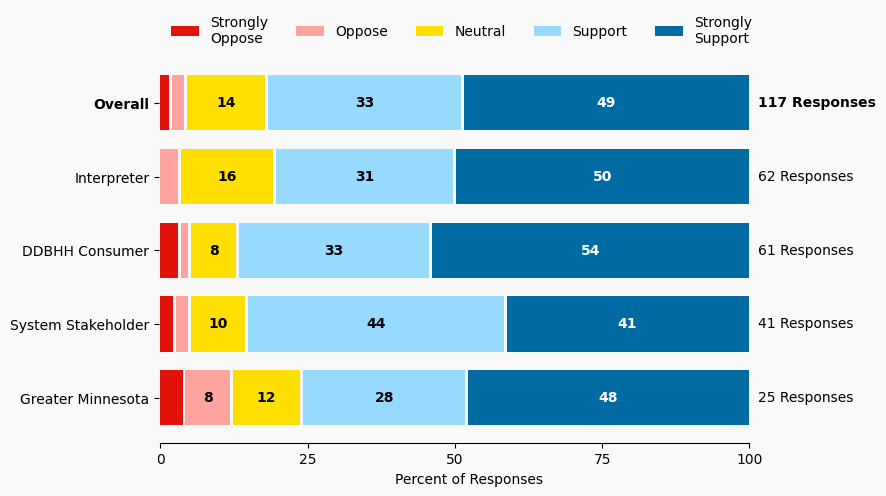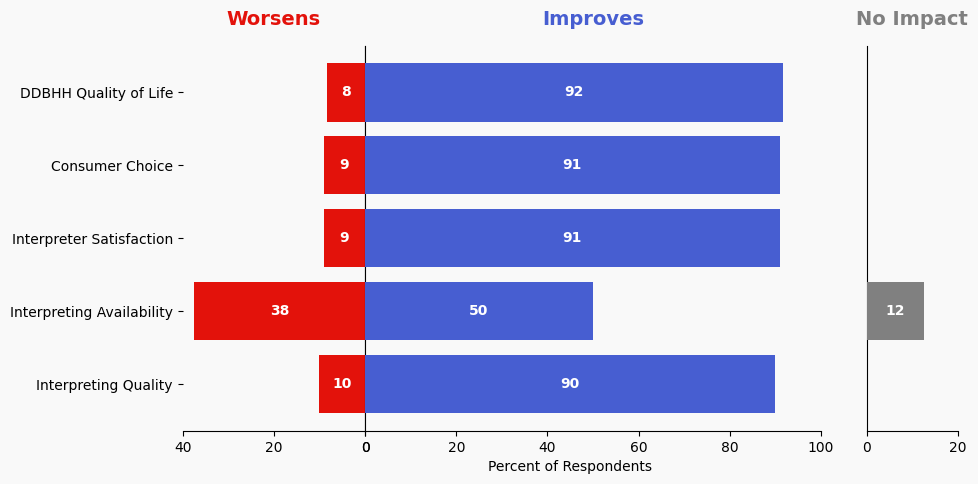65 Develop Legislation and Mechanism to Prohibit Unqualified K12 Educational Interpreters
Issue: School districts, particularly in Greater Minnesota, may be hiring “Langauge Facilitators” and “ASL Paraprofessionals” who are functioning in the role of an interpreter. While a Paraprofessional with ASL competency may be a valid need, oversight is needed to ensure that school districts are not hiring unqualified individuals to serve as working interpreters.
Proposed Solution: Commission in partnership with MDE pursue legislation or rulemaking to ensure that school districts are not renaming the interpreter job description to a different title and thereby avoiding hiring only professional interpreters to fill an interpreting function.
Expected outcome: Higher quality interpreting services resulting in better educational outcomes for DDBHH students.
Who is impacted: DDBHH children in mainstream educational settings, educational interpreters, school districts, educational interpreters
Timeline: 6 months

Summary of Support Image Description
The stacked bar charts show how respondents rated their level of support and the total number of responses. The percentage for the five support levels is shown from left to right: Strongly Oppose (Dark Red), Oppose (Light Red), Neutral (Yellow), Support (Light Blue), and Strongly Support (Dark Blue).
Respondents may identify with multiple subgroups. The overall level of support is:
Overall
Strongly Oppose: 2%
Oppose: 3%
Neutral: 14%
Support: 33%
Strongly Support: 49%
Click to see the detailed image description for each subgroup.
Interpreter
Strongly Oppose: 0%
Oppose: 3%
Neutral: 16%
Support: 31%
Strongly Support: 50%
Greater Minnesota
Strongly Oppose: 4%
Oppose: 8%
Neutral: 12%
Support: 28%
Strongly Support: 48%
DDBHH Consumer
Strongly Oppose: 3%
Oppose: 2%
Neutral: 8%
Support: 33%
Strongly Support: 54%
System Stakeholder
Strongly Oppose: 2%
Oppose: 2%
Neutral: 10%
Support: 44%
Strongly Support: 41%
Overview of Respondents Opting for In-Depth Solution Analysis
After indicating their support level, 8% of the 117 respondents opted in to further assess whether the solution would worsen or improve on five metrics. Of the opt-in reviewers (10 respondents), 60% supported the solution, 30% were neutral on the solution, and 10% opposed the solution.
The remaining 107 respondents did not opt in to further assess the solution. Of these people, 84% support the solution, 12% were neutral on the solution, and 3% opposed the solution.
Reviewer Evaluation of Solution Effectiveness

Solution Effectiveness Image Description
The stacked bar charts show how respondents assessed the effectiveness of this solution based on five metrics. For each metric, the percentage of respondents is shown from left to right: Worsens (Red), Improves (Blue), No Impact (Gray).
DDBHH Quality of Life
Makes It Worse 8%
Makes It Better 91%
No Impact 0%
Interpreter Satisfaction
Makes It Worse 9%
Makes It Better 90%
No Impact 0%
Consumer Choice
Makes It Worse 9%
Makes It Better 90%
No Impact 0%
Interpreting Availability
Makes It Worse 37%
Makes It Better 50%
No Impact 12%
Interpreting Quality
Makes It Worse 10%
Makes It Better 90%
No Impact 0%
Reviewer Feedback and Insights
Interpreter
Comments from Interpreters highlight the importance of clearly differentiating between qualified interpreters and para-professionals during the hiring process. One comment expresses support support for legislation to ensure that schools hire only qualified K12 interpreters and do not misuse job titles such as “para-professional with ASL.”
Deaf, DeafBlind, Hard of Hearing
One comment from DDBHH Consumers emphasize that involving parents and teachers in the conversation about improving interpreting services is a crucial step toward enhancing educational outcomes for DDBHH students. One comment suggests collaboration with organizations like the Beacon Center to prevent the renaming of interpreter positions.
System Stakeholder
Comments from System stakeholders support efforts to clarify the use of “language facilitators” and prohibit the posting of job positions such as “Para-professional with ASL skills” or “ASL Communication Facilitator”. One comment suggests monitoring postings state-wide to identify school districts that may need further awareness and education. Another comment suggests working with existing interpreters in school districts to improve their skills, develop a registry of interpreters, and require CEUs.
PREVIOUS SOLUTION
64 Campaign to Support Interpreters in Greater Minnesota Being Hired by Local State Agency Offices
Issue: Consistent work options for Greater Minnesota freelance interpreters has been a challenge. Only interpreter referral companies are included in the vendor list for the state.
NEXT SOLUTION
66 Establish Fund to Offer Moving Bonuses to Out-of-State Interpreters Moving to Minnesota
Issue: interpreter shortage
Leave a Reply